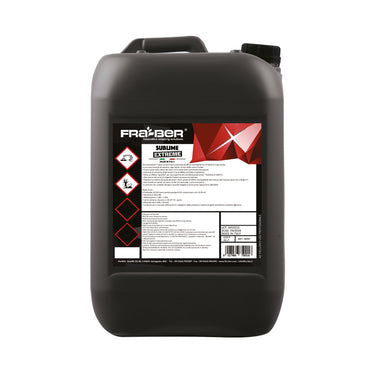DETAILING ACADEMY
The course is divided into three parts and is suitable for both amateurs and advanced users who want to upgrade their knowledge.
DAY 1: Products and Techniques for Exterior and Interior Cleaning
1. Definitions and Explanations of Detailing Terminologies:
- Hydrophobic (Water-Repellency)
- Brilliance
- Active Enzymes & Surfactants
2. What is Detailing?
3. Innovacar's Detailing Cyclic System:
The 6 Steps of the Detailing Process by Innovacar
4. Evaluation and Dirt Inspection of The Vehicle:
- Inspect the vehicle for existing scratches, defects and damage.
- Evaluate the dirt and the types of dirt present: tree sap, bird droppings, bugs, grease, scale, tar and iron particles.
5. Distinguishing different types of stains in the interior.
6. Dilution Techniques and Tips:
- Bucket Washing
- Foam Cannon
- Spray Bottles
- Foamer Bottles
7. Explanation of the importance of pH properties in chemicals
8. Chemical and Mechanical Decontamination
9. Proper Car Wash Method (3 Bucket Method):
Prewash with active foam
Cleaning wheels from iron deposits
Removal of tar deposits, resin, glue
Cleaning rubber seals and plastic parts
Cleaning frequently neglected areas of the car
pH neutral car shampoo
Drying the car with microfibre cloths and air-drying
10. Interior Cleaning
11. Glass and All-Purpose Cleaners
DAY 2: Polishing, Restoration and Exterior and Interior Protection
1. Surface Inspection:
- Swirls
- Scratches
- Haze
- Measuring the thickness of the clear coat
2. The Purpose of Polishing and Restoration
3. The Layers on a Car's Surface Explained
4. The Difference Between Cutting, Polishing, One-Step and Finishing Compounds/Polishes
5. How to Use Colour-Match Inspection Lights
6. Classification of the Different Types of Pads:
- Cutting
- Polishing
- Finishing
- Foam
- Microfibre
- Wool
7. What types of machines we use for paint correction:
- Rotary Machine
- Random Orbital Machine
- Orbital Machine with a geared centre of rotation
8. Spot Testing Polish and Pad Combinations
9. Practical- Paint Correction on a Vehicle
10. How to Remove Excess Compound/Polish on a Car
11. Different Variations of Protection:
- Paint
- Glass
- Leather
- Fabrics
- Plastics
- Rubber
DAY 3: Ceramic Coatings and Post-Protection Maintenance
1. Ceramic/Nanotechnology Products Explained
- Resistance (Hardness)
- Hydrophobic Properties
- Lifespan
2. How to Apply Ceramic Coatings
3. What Tools and Equipment You Need to Apply a Coating
4. Practical- Applying a Coating on a Vehicle
5. Post-Protection/Maintenance Explained
6. Post-Protection/Maintenance Products
7. Practical- Using Maintenance Products on a Prevously Ceramic Coated Vehicle
What to Expect from Our Training:
- Theoretical and Practical Parts
- Time for Open-Ended Questions (Q&A)
- Certificate of Completion of the Training Course
- Certificate of Acquired Knowledge
- Free Official Branded Merchandise
Book Now:
Benefits Of This Course

Certification
Receive a certificate of completion at the end of the course

Personal Growth
Learn new skills and grow your knowledge

Networking
Meet people who have the same interests as you and increase your network

Product Insight
Learn about what products work the best together for the job you need done











